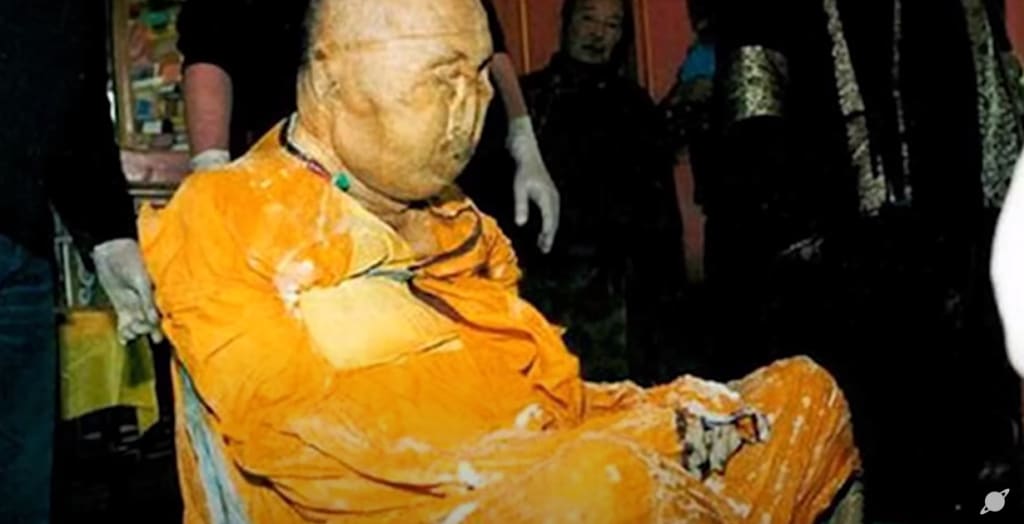Mummified Buddhist Monk Comes Back to Life After 89 YEARS
The Mysterious Case of Lama Itigelov

The Mysterious Case of Lama Itigelov
In the Republic of Buryatia in Siberia, there is a mummified monk named Lama Itigelov. He is said to have died in 1927, but his body has not decayed. Some people believe that he is still alive in a deep meditative state.
In 1955, the monks who were guarding Lama Itigelov's body were surprised to find that it was still in perfect condition. They examined the body and found no signs of decay. In 1973, the body was examined again, and the results were the same.
In 2002, Lama Itigelov's body was exhumed for the third time. This time, scientists were present to examine the body. They were also surprised to find that the body was still in perfect condition.
The scientists who examined Lama Itigelov's body were unable to explain how it had not decayed. They did not find any evidence of embalming, and they could not find any natural explanation for the body's preservation.
Some people believe that Lama Itigelov is still alive in a deep meditative state. They believe that he is waiting for the right time to return to the world. Others believe that he is simply a very well-preserved mummy.
The mystery of Lama Itigelov's body continues to fascinate people around the world. There is no definitive answer to the question of whether he is alive or dead. However, his story is a reminder of the power of faith and the mysteries of the human body.
The Future of Typing
Have you ever wished that you could just think about what you want to type and have it magically appear on the screen? Well, that technology may be closer than you think.
Scientists are working on developing new ways to allow people to type with their minds. One promising technology is called electrocorticography (ECoG). ECoG involves implanting electrodes in the brain that can record electrical signals. These signals can then be used to control a computer cursor or to type text.
Another promising technology is called brain-computer interfaces (BCIs). BCIs use a variety of methods to read brain signals and translate them into commands. For example, some BCIs use EEG, which measures electrical activity on the surface of the scalp. Other BCIs use fMRI, which measures blood flow in the brain.
Both ECoG and BCIs are still in their early stages of development, but they have the potential to revolutionize the way we interact with computers. In the future, we may be able to type with our minds as easily as we can speak.
Super Recognizers
Have you ever met someone who seems to be able to remember everyone's face? These people are called super recognizers. They have the ability to remember faces with incredible accuracy, even if they have only seen the person once.
Super recognizers are rare, but they are becoming increasingly important in law enforcement. They can be used to identify suspects from surveillance footage or to help match missing persons with their families.
If you think you might be a super recognizer, there are a few tests you can take to find out. One popular test is the Cambridge Face Memory Test. This test shows you a series of faces and then asks you to identify them later.
If you score high on the Cambridge Face Memory Test, you may be a super recognizer. However, it is important to remember that there is no single test that can definitively determine if someone is a super recognizer.
In this article, we have explored three fascinating topics: the mysterious case of Lama Itigelov, the future of typing, and super recognizers. These topics are all at the cutting edge of science, and they offer a glimpse into the future of human-computer interaction.
I hope you found this article interesting. If you have any questions or comments, please feel free to leave them below.





Comments
There are no comments for this story
Be the first to respond and start the conversation.